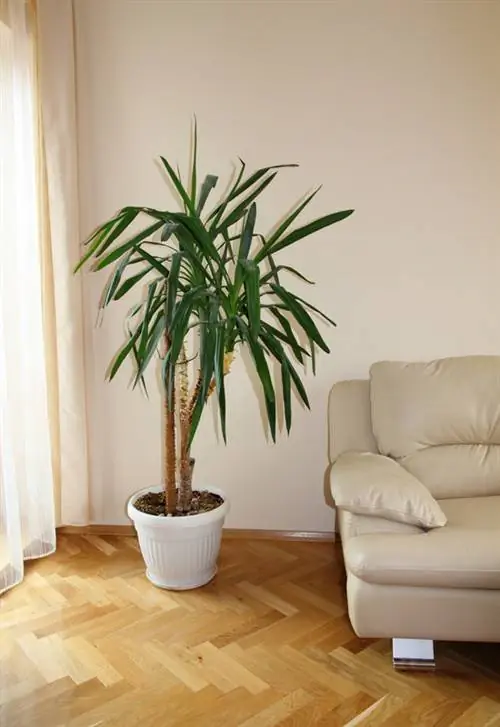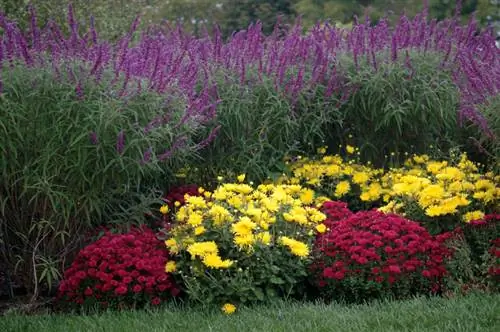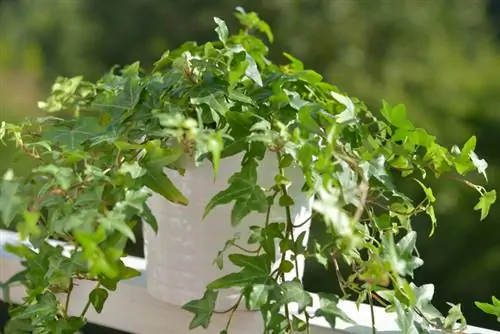- Author admin [email protected].
- Public 2023-12-16 16:46.
- Last modified 2025-06-01 06:02.
They are often sold during their flowering period in autumn: mostly non-hardy chrysanthemums in pots. Unfortunately, the very rich and long-flowering plants are often thrown away after they have flowered, although the varieties of Chrysanthemum indicum are particularly suitable for indoor cultivation. Read what you should pay attention to when caring for the “Golden Flower” - that is the meaning of the name, which comes from Greek.

How do I care for a chrysanthemum as a houseplant?
Chrysanthemums as houseplants require brightness, but no direct sunlight, regular watering and fertilization, a well-drained substrate and a winter break at temperatures between five and ten degrees Celsius. They should also be repotted and trimmed every two years.
Location
Chrysanthemums like brightness, but not direct sunlight. For this reason, they also thrive where other houseplants would quickly die, for example on a north-facing window. In summer you can put the plant on the balcony or terrace.
Substrate
Conventional pot and balcony plant soil is best, which you can mix in a ratio of 2:1 with clay granules (€19.00 at Amazon) or sand. Make sure that the plant pot has a drainage hole at the bottom. You should also add pottery shards or similar material as the bottom layer to improve drainage.
Watering and fertilizing
Chrysanthemums are heavy feeders, so they need to be watered and fertilized regularly. The flowers tolerate neither dryness nor waterlogging. It is therefore best to water when the substrate has already dried on the surface. Fertilize with a liquid complete fertilizer between April and September, and there is a break from fertilization during the winter. Plants potted or repotted in fresh substrate do not need to be fertilized initially - commercial potting soil is usually already pre-fertilized.
Repotting
The plant reproduces through runners that quickly root through the pot. To prevent aging, chrysanthemums should be repotted and thinned out every two years. You can also multiply and rejuvenate them by division.
Cutting
Pnip the shoot tips regularly between May and July and shorten the new shoots to approx.four sheets. These cuts encourage the plant to branch more. During the flowering period, remove spent stems as they dry out. However, the plant keeps producing new flowers. At the end of the flowering period, a radical cut back to just above the ground is carried out.
Wintering
Chrysanthemums definitely need a winter break during which they can recover and recharge their batteries. It is best to overwinter the plant at temperatures between five and ten degrees Celsius, for example in the stairwell or basement. The winter quarters do not necessarily have to be bright.
Tip
Chrysanthemums can also be propagated quite easily using seeds - bought or collected yourself.






